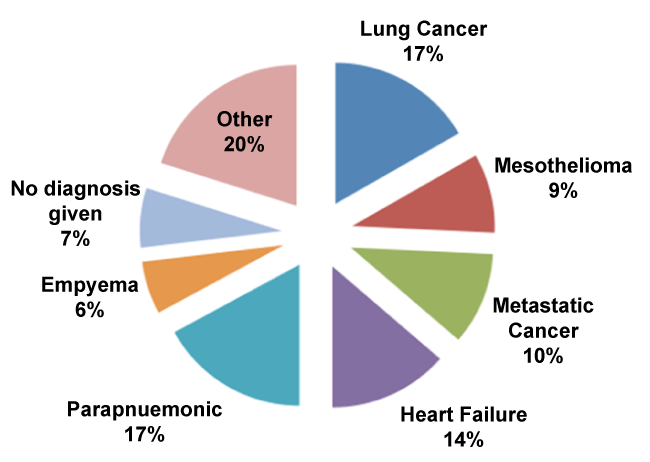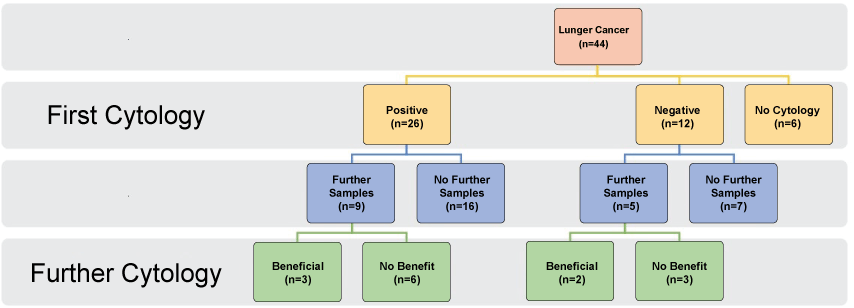International Journal of Respiratory and Pulmonary Medicine
Seromucinous Hamartoma Presenting as an Obstructive Endobronchial Mass
Guang-Qian Xiao1* and Sapna Patel2
1Department of Pathology, Keck Medical Center of the University of Southern California, USA
2Department of Pathology, University of Rochester Medical Center, USA
*Corresponding author:
Dr. Guang-Qian Xiao, Department of Pathology, Keck Medical Center, University of Southern California, 1500 San Pablo Street, Los Angeles, CA 90033, USA, Tel: 323-442-9610, Fax: 323-442-9993, E-mail: guang-qian.xiao@med.usc.edu
Int J Respir Pulm Med, IJRPM-4-066, (Volume 4, Issue 1), Case Report; ISSN: 2378-3516
Received: October 28, 2016 | Accepted: February 7, 2017 | Published: February 10, 2017
Citation:Guang-Qian X, Patel S (2017) Seromucinous Hamartoma Presenting as an Obstructive Endobronchial Mass. Int J Respir Pulm Med 4:066. 10.23937/2378-3516/1410066
Copyright: © 2017 Guang-Qian X, et al. This is an open-access article distributed under the terms of the Creative Commons Attribution License, which permits unrestricted use, distribution, and reproduction in any medium, provided the original author and source are credited.
Abstract
Seromucinous hamartoma is an extremely rare entity that has been described in the sinonasal cavity and nasopharynx. We here present a case of seromucinous hamartoma manifesting as an obstructive endobronchial mass in a 65-year-old male and active smoker, who presented with dyspnea upon prolonged exertion and atelectasis.
Keywords
Seromucinous hamartoma, Endobronchial mass, Dysplasia, Atelectasis
Introduction
Benign endobronchial tumors are rare diseases of the tracheobronchial airway [1]. These neoplasms are mostly slowly growingand their clinical presentations arerelated to bronchial obstruction, such as cough, wheezing, or recurrent pneumonia. Imaging studies may show endobronchial lesions, pneumonia, atelectasis, and bronchiectasis. It is important to recognize these entities so that individual patients can be conservatively managed. Seromucinous hamartoma is an extremely uncommon entity and almost all the cases are described in the sinonasal cavity or nasopharynx [2]. We here present a seromucinous hamartoma manifesting as an obstructive endobronchial mass.
Case Presentation
Clinical history
A 65-year-old male and active smoker had a past medical history of hypertension, hyperlipidemia and asthma. Family history was significant for chronic obstructive pulmonary disease (mother), Alzheimer's disease (father), and lung cancer (brother). He presented with right middle lobe obstructing endobronchial mass 7 years ago with negative PET scan, when he had a bronchoscopic and biopsy/debridement of this mass which was negative for malignancy. During the seven-year interim, the patient developed dyspnea upon prolonged exertion. The mass was brushed as well as biopsied on multiple occasions and was found to be a benign polypoid lesion negative for malignancy, not otherwise specified. On a routine surveillance chest CAT scan 6 months ago, it appeared that the mass had returned. Bronchoscopy and physical exam revealed bilateral wheezing and neck pain. A routine non-contrast chest CAT scan performed at an outside institution showed a partially visualized 6 mm endobronchial lesion at the origin of the right middle bronchus with a 5.1 cm area of atelectasis in the right middle lobe. He denied shortness of breath, hemoptysis, chest pain, fever, weight loss, and lymphadenopathy. An endoscopic excision was subsequently performed.
Pathologic finding and diagnosis
The specimen grossly consisted of multiple irregular tan-pink polypoid soft tissue fragments with aggregate dimensions of 1.1 cm × 0.3 cm × 0.3 cm. The tissue was fixed and embedded and the sections were stained with Hematoxylin and Eosin and immunohistochemistry.
Microscopic evaluation of the tissue sections revealed benign pseudo-stratified respiratory epithelium with submucosal seromucinous acinar glands and ducts among the mildly cellular stroma. The seromucinous acini and ducts growing in a lobular pattern displayed histomorphologic features of minor salivary glands (Figure 1A and Figure1B). The seromucinous cells showed no appreciable cytological atypia. The stroma exhibited conspicuous lymphovasculature with dilated slit-like spaces surrounded by hyalinizing material, resembling the nasopharyngeal tissue. Immuno histochemical stains revealed myoepithelial cells in the seromucinous acinar glands (positive for S100, SMA and Calponin) (Figure 2A). The stroma was positive for progesterone receptor (Figure 2B), but negative for estrogen receptor. The diagnosis of seromucinous hamartoma was subsequently rendered. The patient is currently doing well. A chest x-ray following excision showed resolution of the atelectasis.

.
Figure 1: (Hematoxylin and Eosin).
Figure 1A (low magnification): A polypoid lesion lined by respiratory mucosa. The submucosa is composed of mixed acini and ducts in a lobular growth pattern and conspicuous lymphovasculature with slit-like spaces.
Figure 1B (high magnification): The acini and ducts are lined by seomucinous cells. The lymphovasculture is surrounded by hyalinizing material (insert).
View Figure 1

.
Figure 2A: Immunohistochemistry reveals that the acini contain a layer of calponin-reactive myoepithelial cells.
Figure 2B: The stroma cells are positive for progesterone receptor.
View Figure 2
Discussion
Benign tumors of the lung and tracheobronchial tree comprise less than 10% of bronchopulmonary neoplasms [1,2]. Based on the origin, benign endobronchial neoplasms can be divided into mesenchymal, submucosal glandular, and surface epithelial tumors. The tumors of mesenchymal origin account for the majority of these lesions andthe most common one being hamartoma [1,2].
Endobronchial Hamartomas are mostly caused by malformation of bronchial wall mesenchymal elements. Most described endobronchial hamartomas contain a mixture of cartilage, bone, fat, and smooth muscle tissue and are lined by respiratory epithelium. Minor salivary glands can be found in the subepithelial tissue along the airways. However, minor salivary gland tumor of the tracheobronchial airway is rare. Most tumors arising from minor salivary glands along the airway are malignant [3], of which, notably, are mucoepidermoid carcinoma and adenoid cystic carcinoma [3]. These malignant tumors differ from salivary glandular epithelium-containing hamartomas by their invasive growthand monotonous appearance as well as cytological and architectural atypia.
Respiratory epithelial adenomatoid hamartoma (REAH) is the most commonly described salivary gland-related hamartomatous lesion [4-7]. REAHs of head and neck are thought to arise from invagination and proliferation of Schneiderian epithelium and consist of polypoid masses with cysts lined by ciliated respiratory epithelium. These cysts are directly connected to the surface epithelium and are often surrounded by a thick hyalinized basement membrane [5]. A second and much rarer type of salivary gland hamartoma is the seromucinous hamartoma [4]. Seromucinous hamartomas are polypoid masses with proliferation of acini and ducts which are lined by cuboidal or flattened seromucinous epithelial cells and grow in clusters, lobules, or irregular haphazard patterns [4]. The stroma is usually edematous and may contain chronic inflammatory cells. All seromucinous hamartomas are so far reported in the sinonasal cavity and nasopharynx [2,8]. Our case displayed similar histologic features to the seromucinous hamartoma described in the sinonasal cavity and nasopharynx.
Only one similar case, which the authors called it seromucinous gland hyperplasia, has been reported in the tracheobronchial airway. This reported lesion was present at the level of the main carina, clogging the right main bronchus and histologically containing fat [9].
Although endobronchial seromucinous hamartoma is an extremely rare lesion, it is important that both pathologists and clinicians are aware of this entity as a cause of obstructive dyspnea and atelectasis, so that correct diagnosis is made and the patient being managed conservatively. Treatment mainly includes observation and conservative endoscopic resection depending on the clinical scenario. The outcome is generally excellent.
References
-
Agarwal A, Sundar S, Meena N (2015) Benign Endobronchial Neoplasms: A Review. J Pulm Respir Med 5: 1-7.
-
Weinreb I, Gnepp DR, Laver NM, Hoschar AP, Hunt JL, et al. (2009) Seromucinous hamartomas: a clinicopathological study of a sinonasal glandular lesion lacking myoepithelial cells. Histopathology 54: 205-213.
-
Kruse AL, Gratz KW, Obwegeser JA, Lubbers HT (2010) Malignant minor salivary gland tumors: a retrospective study of 27 cases. Oral Maxillofac Surg 14: 203-209.
-
Baillie EE, Batsakis JG (1974) Glandular (seromucinous) hamartoma of the nasopharynx. Oral Surg Oral Med Oral Pathol 38: 760-762.
-
Wenig BM, Heffner DK (1995) Respiratory epithelial adenomatoid hamartomas of the sinonasal tract and nasopharynx: a clinicopathologic study of 31 cases. Ann Otol Rhinol Laryngol 104: 639-645.
-
Zarbo RJ, McClatchey KD (1983) Nasopharyngeal hamartoma: report of a case and review of the literature. Laryngoscope 93: 494-497.
-
Graeme-Cook F, Pilch BZ (1992) Hamartomas of the nose and nasopharynx. Head Neck 14: 321-327.
-
Fleming KE, Perez-Ordonez B, Nasser JG, Psooy B, Bullock MJ (2012) Sinonasal seromucinous hamartoma: a review of the literature and a case report with focal myoepithelial cells. Head Neck Pathol 6: 395-399.
-
Sengul AT, Sullu Y, Buyukkarabacak YB, Pirzirenli G, Basoglu A (2012) Endobronchial hypertrophic seromucous salivary gland: a rare bronchial occlusion. Ann Thorac Surg 94: e73-75.





